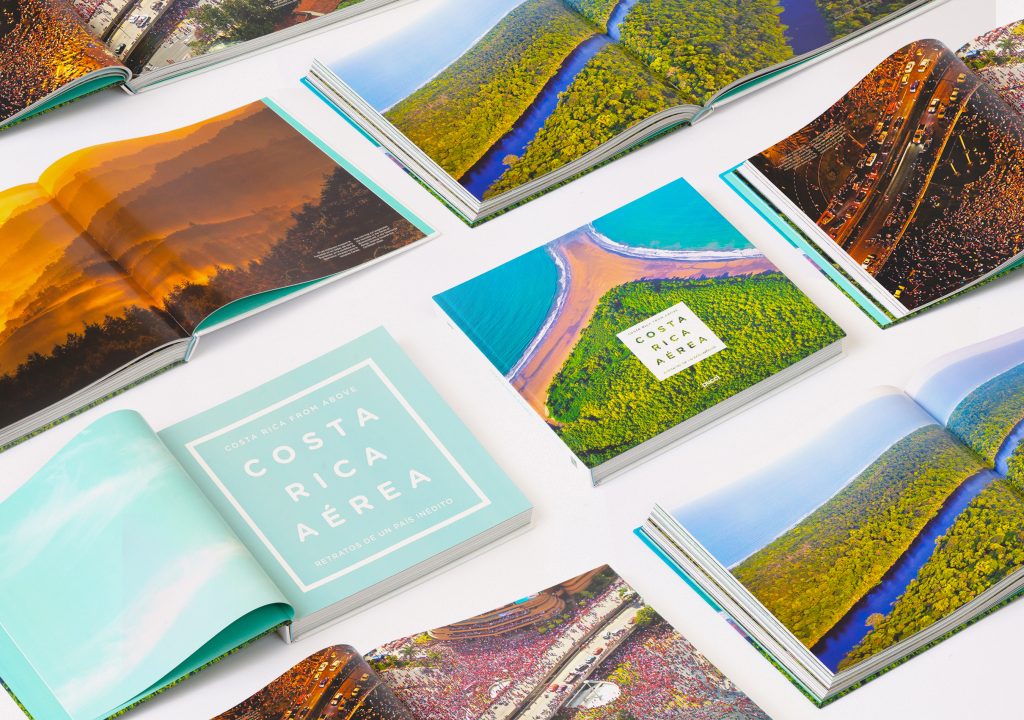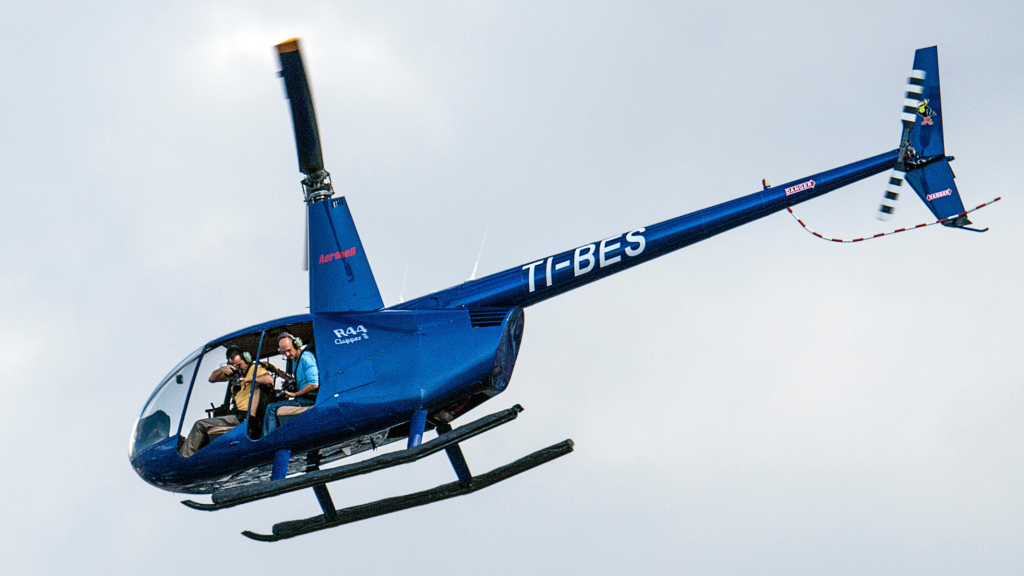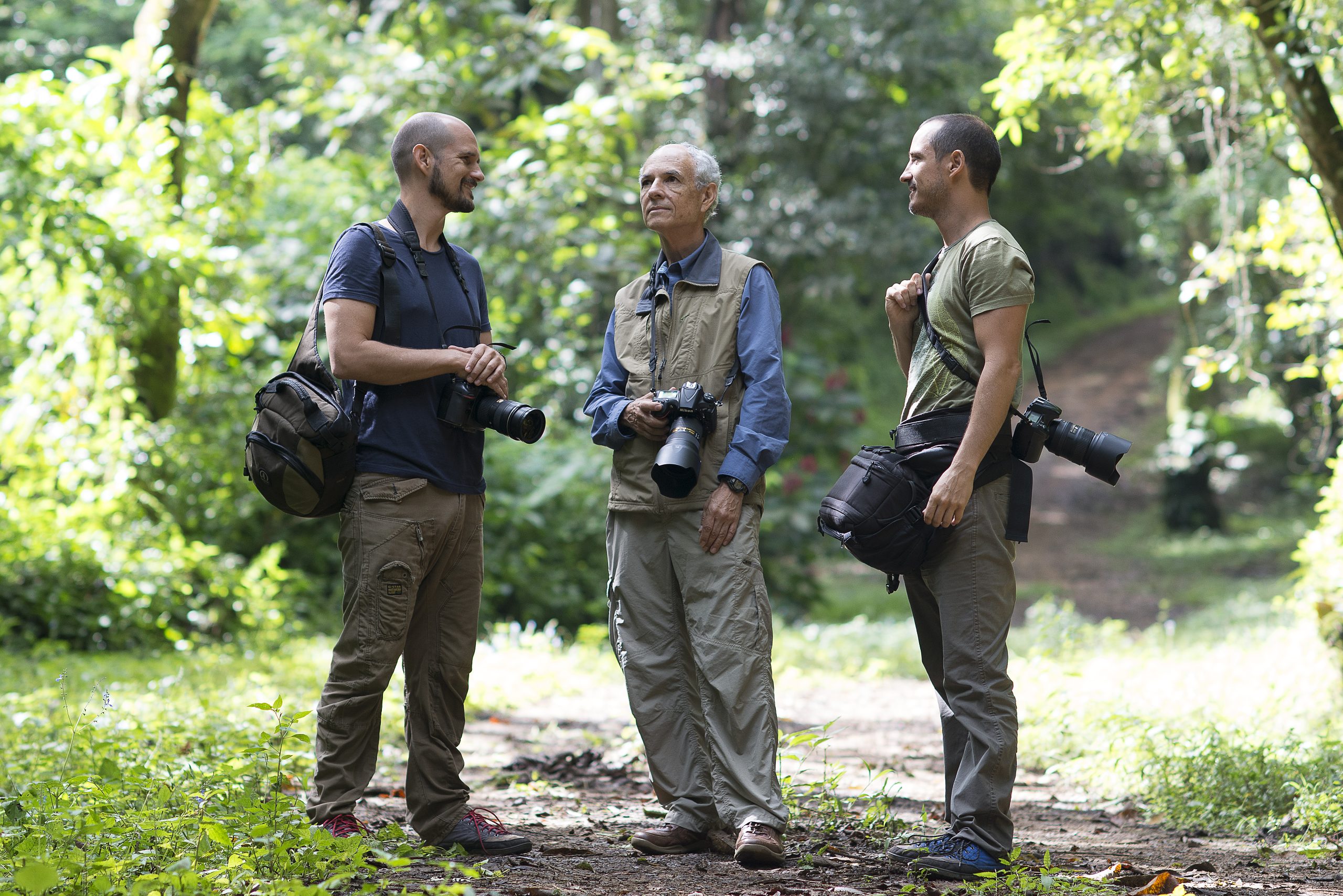What’s the impact of a beautiful photo?
In a way, that’s what Pucci Photo had to answer in order to become not only a Certified B Corporation, but a Best for the World honoree. This business, which grew out of the passion of the Pucci family for photography and nature, lived mostly in the lenses of their cameras and in the heads of the handful of people who were making it grow. Co-founder Giancarlo Pucci says that the B Impact Assessment represented a download of sorts, forcing the company’s leaders to express and record the way in which its mission was reflected in its various areas of impact.

Giancarlo built Pucci Photo with his brother, Sergio, and their father, Juan José, all of whom share a love of photography and nature. Today, the company has produced bestselling publications such as the bestselling aerial photography book “Costa Rica Aérea.” But while their lives and brand are inextricably linked to Costa Rica’s landscape, the seed for their identity as a B Corp was first sown in Sweden, where Giancarlo got a Master’s degree in strategic leadership for sustainability. The research for his thesis led him across the B Movement of business such as Patagonia that were making environmental and social impact an integral part of their operations.
Unlike some of our other B Corp interviewees this month in Costa Rica, Giancarlo had already founded not only a business, but also a nonprofit: the Magical Trees Foundation, which uses photography, educational projects and other initiatives to raise awareness about the importance of trees and reforestation. Pucci Photo supports the foundation with a part of its profits, so that the company could already point to social and environmental impact. However, Giancarlo says that ingraining this focus throughout the company, rather than one branch, felt natural.
“It was a systemic focus, you know? How can we interact differently and redesign our organizations, our products?” says Giancarlo. “It felt like a really good step to start discovering how regeneration happens, and how we can change the way we’re living on this planet.”

He says that while filling out the evaluation had its challenges and did require a lot of time, especially the first year, it was an advantage to go through the process as a small business. (Pucci currently has a B Impact score of 80.1; its first score when it certified in 2016 was 110.3.)
“We’re a small business,” he says. “ We have many allies, collaborators, providers, but we’re still a small business. That’s a big advantage, because it’s relatively simple [to fill out the assessment] unless you’re doing something that’s really out of line with [sustainability]… but it helped us to get organized.”
We wanted to know what it’s like for a business with very few workers, and whose end users are often readers whose faces the Puccis might never see, to complete the two sections of the B Impact Assessment that focus on two key groups of stakeholders: workers and customers.

The B Assessment’s workers and customers impact areas
One of our other interviewees this month, Silvia Chaves of Florex, mentioned that one major appeal of the B Impact Evaluation is the way it integrates environmental and social concerns—planet and people. Two of its sections, Workers and Customers, zero in on the two specific groups of people who are key stakeholders in any business.
The Workers section has businesses document the composition and compensation of their workforce. How many workers do they have, and under what kind of contract? Are all workers paid a living wage? What policies and practices are in place to govern pay, employee ownership, and retirement? What’s in the employee handbook? What about worker safety, health care, and caregiving leave?
But the section also goes beyond that, looking at how businesses are motivating and engaging their workers–how workers are reviewed, how their complaints and suggestions are gathered and taken into account, and what professional development opportunities are provided for them.

The Customers section zooms way in on a group of people that, for some businesses, are easily quantifiable and very well known, customers who come into a shop or regular clients—and that for a company like Pucci Photo (or El Colectivo 506) are a bit more nebulous, as end users who are generally unknown to us. The section asks businesses to quantify and describe the people who use their products, and generates sector-specific questions about how the company gathers customer data and feedback, and how it measures any impact that the products might cause in that customer’s life.
The section allows businesses a great deal of latitude in defining who its beneficiaries actually are—but once you’ve chosen whether you’re affecting individuals, households, communities, businesses or nonprofit organizations, or governments, you need to be prepared to provide data about how many you’re affecting, and how you assess and measure your impact. The section also pushes businesses to consider how they could expand access to their services.
Both sections, like the other three sections of the B Impact Assessment, offer businesses a chance to prove that they not only generate positive impact in the given area, but also build their business model around that impact area. This is not a requirement; achieving it is rare; and businesses are in no way expected to have an impact business model in all five areas.
A business with a Worker Impact Business Model would have an “ownership structures that provide significant equity (>40%) and empowerment to all employees (e.g. employee-owned companies, cooperatives)” or “provide high quality jobs or professional development for individuals with chronic barriers to employment (workforce development programs).”
A business with a Customer Impact Business Model sells “products or services that address a social or economic problems for customers and/or their beneficiaries,” according to the Assessment. This might include products or services that provide electricity, clean drinking water, affordable housing and other infrastructure to those without prior access; financial services software, mobile technology, or services that streamline/enhance business activity; or other products or services that improve health or education outcomes, preserve local culture, or improve the social/environmental impact of clients.

Adapting the workers and customers impact area to Costa Rica
Giancarlo says that because the core team at Pucci Photo was so small—his brother, father, and their longtime collaborator Teresa Brenes—the Workers section brought up interesting points that hadn’t been on their radar.
The evaluation “draws your attention to many details that you might not have had mapped out,” he says. One of these is “the issue of equity: how do the highest and lowest salaries compare? These are topics that aren’t usually discussed.”
He said he appreciates that the evaluation also leads a company through a review of its gender equity, going beyond simply the gender diversity of the team.
“How much do women participate in decision-making? Because you could be 50/50 men and women, but the women don’t have decision-making power or access to finances,” he says.

The assessment also put structure around something that had already been innate at Pucci: the encouragement of lots of reflection by everyone on the team.
“We’ve always been very intentional about making sure that there’s lots of openness and honesty among the people we’re working with… and that we’re constantly exploring how we feel beyond work,” he says. The evaluation “didn’t lead to big changes, but it did help us put it into words.”
When it comes to assessing impact on customers and beneficiaries, he says one Pucci effort that the B Impact Evaluation has helped shape is its effort to improve the access of undeserved populations to the company’s products.
“One filter is buying power, so you can pay c20,000 or more for a book,” he says. “So in many cases we donate books to libraries and schools… and share content on social media so that anyone can see it… and with the Magical Trees Foundation as our sister organization, we donate photographs, time, books. So there I think there are very tangible beneficiaries. We might reforest a school, take 70 people on a city tour to learn about trees, and so forth.”

He mentions that one of the biggest influences that the Impact Assessment has had on Pucci Photo is related to another area—environment, where Pucci has earned Best for the World honors in 2017, 2018, and 2019. The company was already printing on Forest Stewardship Council-certified paper before becoming a B Corp, but it’s been working for years now to solve a trickier problem:how to wrap its books (essential for bookstore storage in humid Costa Rica) without generating plastic waste. This year, it began using a corn-based wrapper, and Giancarlo says he hopes this will make a lasting impact.
Asked about areas of the B Impact Evaluation that should be improved, Giancarlo echoes the comments of other interviewees this month, saying that more could be done to make it more specific to each country and sector. He also echoes comments that because of the intense time commitment required for documenting each point, ups and downs in a company’s score often reflect their available time for completing the tool, rather than changes in actual performance.
However, he says that his biggest concern centers on the movement’s scalability. As it grows and snowballs, with more and more companies jumping aboard the B bandwagon, he says it will be essential for the movement to make sure it continues to prioritize and lift up business leaders who want to go beyond the minimum to lobby for broader, systemic changes—and who are pursuing not only sustainability, but also regenerative practices.
“I don’t think it’s even a criticism. I don’t like that word,” he says. “I think it’s about being very realistic, and connecting to the real intention behind all of this. The goal isn’t to have a sustainable certification so we can differentiate our products; the intention is a harmonious relationship between humans and the planet, between us and nature.”
We are diving deep into the five impact areas of the B Assessment through the experiences of each of the Certified B Corporations that are supporting our March edition, “Measuring Up.” Read more about all of our sponsoring B Corporations here.





